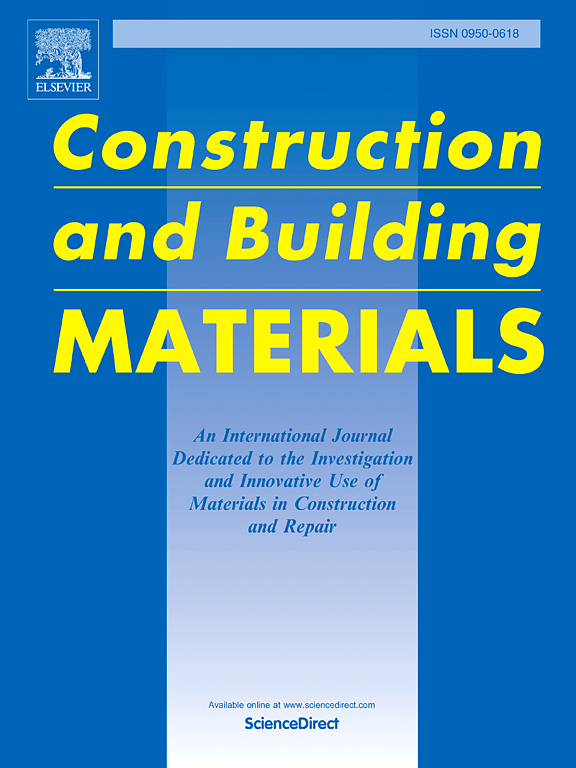硼化物对树脂改性木材阻燃和耐腐性能的影响
IF 8
1区 工程技术
Q1 CONSTRUCTION & BUILDING TECHNOLOGY
引用次数: 0
摘要
本研究采用酚醛-三聚氰胺-脲醛(PMUF)树脂和硼化物对人工林杉木进行浸渍,系统研究了硼化物对PMUF树脂改性木材阻燃和耐腐性能的影响。结果表明,加入硼化物后,复合改性木材的氧指数比树脂改性木材提高了24.2% %,达到了V-0水平。同时,复合改性木材的两个峰值放热率分别下降了39.6 %和32.1 %,总放热率和总排烟率分别下降了19.3 %和43.7 %。拉曼光谱分析表明,复合改性木材的石墨化程度较高。热解-气相色谱/质谱分析表明,硼化物抑制了挥发性酚类化合物的生成,有效地阻止了纤维素中吡喃环的开环断裂。抗腐性能试验表明,树脂改性木材达到了较强的I级抗腐性能,而复合改性木材的抗腐性能略有下降,但仍达到了Ⅱ级。结合扫描电镜、差示扫描量热法、13C固体核磁共振、动态力学和纳米压痕分析表明,硼化物的加入降低了树脂的交联密度,干扰了树脂的固化过程,导致复合改性木材的细胞壁模量和硬度下降。本研究为木材的无机-有机复合改性提供了新的理论依据和技术指导。本文章由计算机程序翻译,如有差异,请以英文原文为准。
Effects of borides on flame retardant and decay resistance properties of resin modified wood
This study employed phenol-melamine-urea-formaldehyde (PMUF) resin and borides to impregnate Chinese fir from planted forests, systematically investigating the influence of borides on the flame retardancy and decay resistance performance of PMUF resin modified wood. The results indicate that after incorporating borides, the oxygen index of the composite modified wood increased by 24.2 % compared to the resin modified wood, achieving a V-0 level. Meanwhile, the two peak heat release rates of the composite modified wood decreased by 39.6 % and 32.1 % respectively, and the total heat release and total smoke release decreased by 19.3 % and 43.7 % respectively. Raman spectroscopy analysis showed a higher degree of graphitization in the composite modified wood. Pyrolysis-gas chromatography/mass spectrometry analysis revealed that borides inhibited the generation of volatile phenolic compounds and effectively prevented the ring-opening fracture of pyran rings in cellulose. Decay resistance tests show that resin modified wood achieves a strong decay resistance grade I, while the decay resistance performance of composite modified wood slightly decreases but still reaches the decay resistance grade Ⅱ. Combined with scanning electron microscopy, differential scanning calorimetry, 13C solid-state nuclear magnetic resonance, dynamic mechanical and nanoindentation analysis, it was indicated that the addition of borides reduced the crosslinking density of the resin, interfered with the curing process of the resin, and led to a decrease in the cell wall modulus and hardness of the composite modified wood. This research provides a new theoretical basis and technical guidance for the inorganic-organic combined modification of wood.
求助全文
通过发布文献求助,成功后即可免费获取论文全文。
去求助
来源期刊

Construction and Building Materials
工程技术-材料科学:综合
CiteScore
13.80
自引率
21.60%
发文量
3632
审稿时长
82 days
期刊介绍:
Construction and Building Materials offers an international platform for sharing innovative and original research and development in the realm of construction and building materials, along with their practical applications in new projects and repair practices. The journal publishes a diverse array of pioneering research and application papers, detailing laboratory investigations and, to a limited extent, numerical analyses or reports on full-scale projects. Multi-part papers are discouraged.
Additionally, Construction and Building Materials features comprehensive case studies and insightful review articles that contribute to new insights in the field. Our focus is on papers related to construction materials, excluding those on structural engineering, geotechnics, and unbound highway layers. Covered materials and technologies encompass cement, concrete reinforcement, bricks and mortars, additives, corrosion technology, ceramics, timber, steel, polymers, glass fibers, recycled materials, bamboo, rammed earth, non-conventional building materials, bituminous materials, and applications in railway materials.
 求助内容:
求助内容: 应助结果提醒方式:
应助结果提醒方式:


